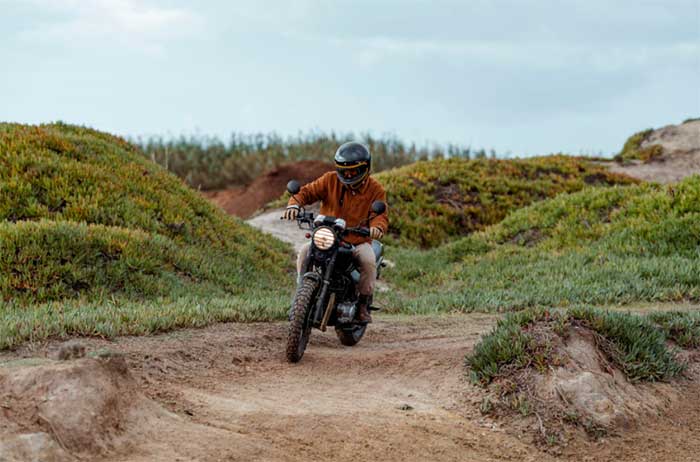Dirt biking at high speeds is an experience that combines raw power, intense focus, and a connection between rider and machine. Whether you’re new to the sport or have years of trail dust on your gear, hitting 60 MPH on a dirt bike changes the way you perceive speed, control, and your physical limits. As noted by Alexander Staffa, the rush isn’t just about adrenaline—it’s about mastering balance, reading terrain, and trusting your instincts as much as your throttle.

How Speed Feels on a Dirt Bike
Riding a dirt bike at 60 MPH doesn’t feel like going the same speed in a car. Without a windshield or cabin, the rush of air hits your chest and helmet directly, making the sensation much more intense. Your body is fully exposed, and even small changes in terrain can make the ride unpredictable. It’s a mix of chaos and control, where your senses fire on all cylinders.
The type of dirt, elevation changes, and bike suspension all affect how the speed feels. A lighter bike might dance under you, while a heavier one keeps steadier lines. Even tire pressure can subtly change how fast it feels under your wheels. Vibration from the engine and the constant feedback through the handlebars keep your senses alert. Your eyes scan rapidly, your hands grip tighter, and your mind tunes into every bump and turn.
What Your Body and Mind Go Through
As the throttle opens and the speed climbs, your body reacts instantly. Heart rate spikes, and a wave of adrenaline surges. That rush sharpens your senses and prepares your muscles for quick, precise movements. Everything seems to slow down, even though you’re flying across dirt at highway speed. It’s your body’s way of handling danger and focusing all at once.
Maintaining proper posture becomes critical. Your legs grip the bike tightly, your back stays slightly arched, and your arms stay loose but responsive. One wrong move and balance shifts, so your body is constantly adjusting. On rougher terrain, it feels like a full-body workout in motion. Riders talk about aching shoulders and legs after just a short session because of how physically demanding it is.
Mentally, it’s all about focus. Distractions disappear as all your attention narrows to the track ahead. Every corner, jump, and obstacle demands total awareness. Some riders describe it as meditative, high-speed clarity where nothing else exists but the ride.
Staying in Control When Going Fast
At higher speeds, safety gear becomes a rider’s best friend. A good helmet, body armor, and boots aren’t just protective—they give confidence. Knowing you’re covered if something goes wrong lets you push harder while still staying smart. It creates a mental safety net that allows precision and aggression to coexist.
Even experienced riders face risks, especially when trails change unexpectedly. A sudden rock or rut can shift the bike off-line in a heartbeat. That’s where practiced technique comes in—feathering the clutch, shifting your weight, and learning how to read the trail in advance make all the difference. The more you ride, the better your instincts get.
Control isn’t about muscling the bike; it’s about working with it. The best riders make it look effortless because they’ve learned how to move with the machine, not against it. At 60 MPH, that connection is what keeps you upright and in charge. It’s a dance of precision, timing, and balance that only comes with experience.
Why Riders Chase Speed
There’s something primal about twisting the throttle and feeling the bike surge forward. Speed taps into a part of the brain that craves excitement and challenge. Over time, riders don’t just chase speed for the thrill. They chase it to improve. Each ride becomes a chance to refine timing, control, and instincts. What once felt terrifying becomes second nature, and that progress feels incredibly rewarding.
Getting Started with Dirt Biking
Choosing the right bike can make or break your first experience. Lighter models with smooth power delivery are easier to manage and less intimidating when you’re still learning how to control the throttle and balance. Gear matters too—well-fitted gloves, boots, and a helmet help you feel secure and ready to focus on the ride. A comfortable rider is a confident rider.
Beginner-friendly trails are usually wide, groomed, and have fewer technical sections. Practicing in places like these helps you build confidence without overwhelming you. Some riders start in open fields or dirt lots, getting comfortable with the basics before moving onto more demanding terrain. It’s all about building a foundation before pushing limits.
What to Expect from the First Ride
The first time you hit 60 on a dirt bike, it feels both unreal and unforgettable. The wind noise, the blur of trees, the way the bike floats and grips—it all hits you at once. Some riders laugh out loud, others white-knuckle the bars, but nearly everyone wants to feel it again. It’s a moment that defines the start of a new obsession.
Afterward, your body buzzes with leftover adrenaline. Muscles you didn’t know you used will feel sore. Your brain replays moments from the ride, analyzing what went well and what didn’t. That mix of thrill and reflection is part of what makes dirt biking addictive. Even the mistakes become learning moments that fuel the desire to get back out there.
